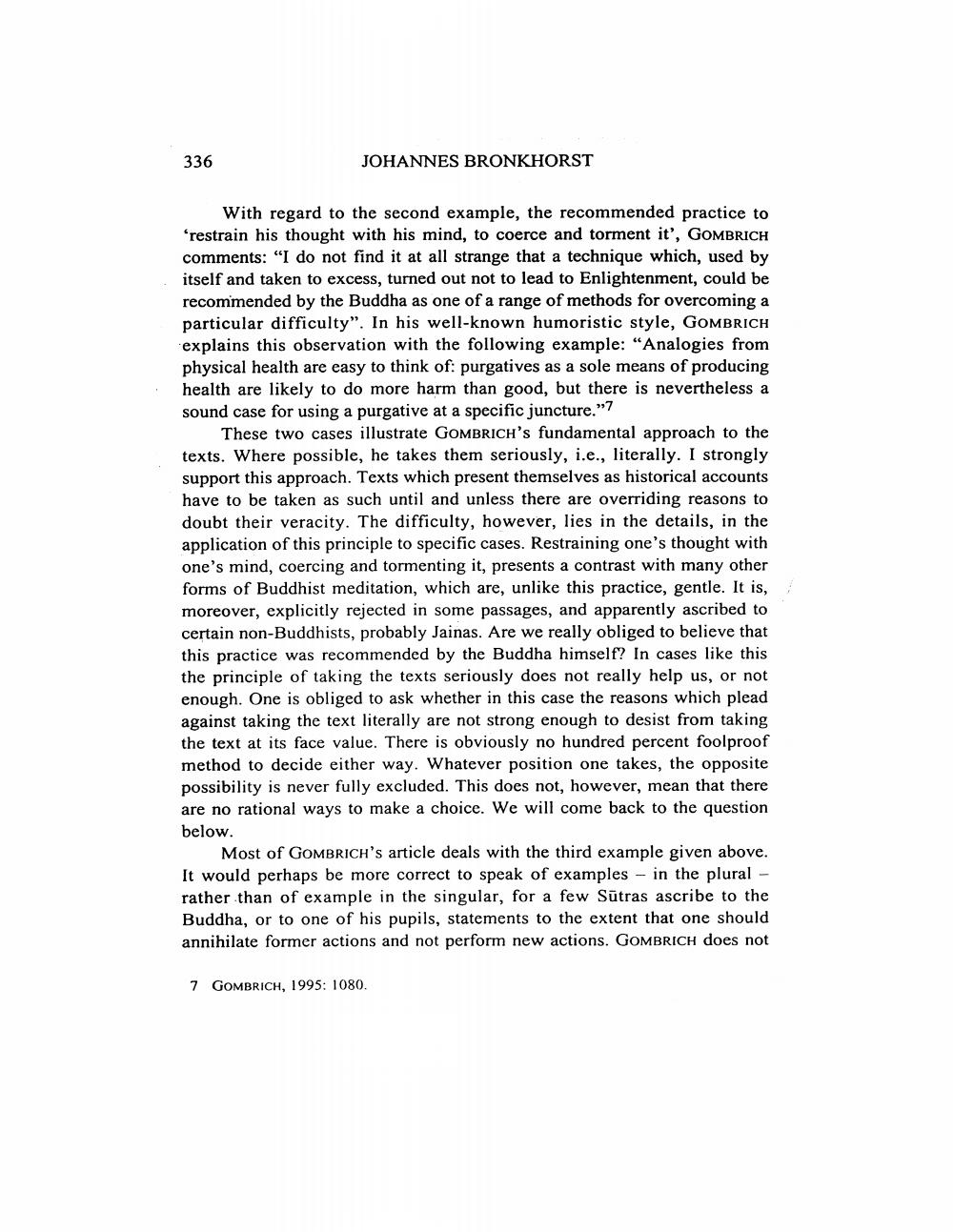Book Title: Buddha And Jainas Reconsidered Author(s): Johannes Bronkhorst Publisher: Johannes Bronkhorst View full book textPage 4
________________ 336 JOHANNES BRONKHORST With regard to the second example, the recommended practice to frestrain his thought with his mind, to coerce and torment it', GOMBRICH comments: "I do not find it at all strange that a technique which, used by itself and taken to excess, turned out not to lead to Enlightenment, could be recommended by the Buddha as one of a range of methods for overcoming a particular difficulty". In his well-known humoristic style, GOMBRICH explains this observation with the following example: “Analogies from physical health are easy to think of: purgatives as a sole means of producing health are likely to do more harm than good, but there is nevertheless a sound case for using a purgative at a specific juncture."7 These two cases illustrate GOMBRICH's fundamental approach to the texts. Where possible, he takes them seriously, i.e., literally. I strongly support this approach. Texts which present themselves as historical accounts have to be taken as such until and unless there are overriding reasons to doubt their veracity. The difficulty, however, lies in the details, in the application of this principle to specific cases. Restraining one's thought with one's mind, coercing and tormenting it, presents a contrast with many other forms of Buddhist meditation, which are, unlike this practice, gentle. It is, moreover, explicitly rejected in some passages, and apparently ascribed to certain non-Buddhists, probably Jainas. Are we really obliged to believe that this practice was recommended by the Buddha himself? In cases like this the principle of taking the texts seriously does not really help us, or not enough. One is obliged to ask whether in this case the reasons which plead against taking the text literally are not strong enough to desist from taking the text at its face value. There is obviously no hundred percent foolproof method to decide either way. Whatever position one takes, the opposite possibility is never fully excluded. This does not, however, mean that there are no rational ways to make a choice. We will come back to the question below. Most of GOMBRICH's article deals with the third example given above. It would perhaps be more correct to speak of examples - in the plural - rather than of example in the singular, for a few Sūtras ascribe to the Buddha, or to one of his pupils, statements to the extent that one should annihilate former actions and not perform new actions. GOMBRICH does not 7 GOMBRICH, 1995: 1080.Page Navigation
1 2 3 4 5 6 7 8 9 10 11 12 13 14 15 16 17 18
